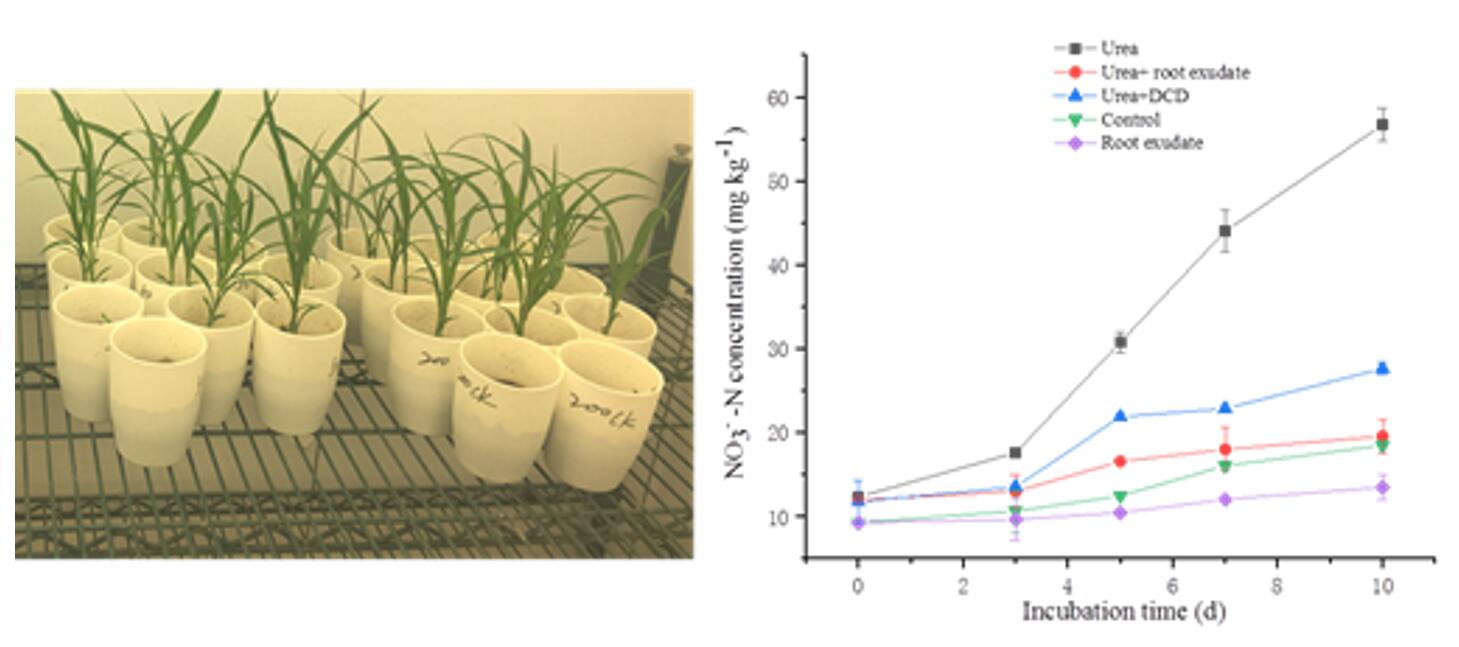| Location: Home > Papers |
| First Author: | LI Yaying |
| Abstract: |
Sorghum has a great capacity to release biological nitrification inhibitors (BNIs), but the inhibitory effect on nitrification and ammonia oxidizer populations under planted soil conditions is unclear. A pot experiment with three nitrogen (N) application rates (0, 50, and 200 mg N kg-1) was set up to detect the influence of sorghum growth on soil nitrification and investigate the function of blocking the activity of ammonia oxidizers. A 15N-labelled experiment was also conducted to detect the N form absorbed by sorghum. Sorghum root exudates were collected at 30 days after transplanting to hydroponic culture and added into cultured soil to determine the shifts in the populations of nitrifiers. The 15N labeling experiment showed the uptake rate by sorghum of ammonium N fertilizer was 24% and that of nitrate N fertilizer was 9%, indicating that sorghum was an ammonium using plant. Compared with unplanted soil, sorghum planting had a significant inhibitory effect on the nitrification process even at the high N fertilizer rates. Autotrophic nitrification was the prevailing process and sorghum root exudation inhibited this process as much as dicyandiamide (DCD, 10 mg kg-1). Root exudates had a significant inhibitory effect on ammonia oxidizing bacteria (AOB) but had no effect on ammonia oxidizing archaea (AOA).
|
| Contact the author: | YAO Huaiying |
| Page Number: | 399-407 |
| Issue: | |
| Subject: | |
| Impact Factor: | |
| Authors units: | |
| PubYear: | January 2021 |
| Volume: | 57 |
| Publication Name: | BIOLOGY AND FERTILITY OF SOILS |
| The full text link: | https://doi.org/10.1007/s00374-020-01538-w |
| ISSN: | |
| Appendix: |
